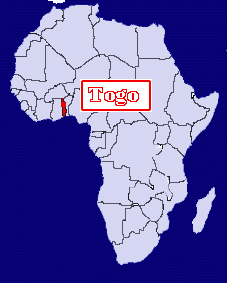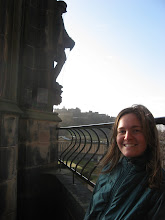Hey everybody! I hope all is well in the states. Things are going well here in Quito. This past week stuff has really picked up with my project and school work, so I am keeping busy. This semester I feel more like a resident than a tourist; I do not travel every weekend to do the touristy stuff nor do I feel the need to leave Quito every weekend.
Organic Food Project
This past week I went to 2 organic farms, one in Pifo, about an hour east of Quito and the other in Pulango, just outside of Pifo. The first farm I visited was great, about 15 acres and the farmer really knew his stuff, he recieved a doctoral degree in the states. He gave me a ton of info and also names of people he has worked with here, so I've got a lot more resources to contact. The farm was really beautiful, birds everywhere, which you don't normally see in Quito, and some really nice plants. Some very happy cows they have are used to make compost and to make cheese, butter and yogurt (yogurt is pretty big in Ecuador, although it is more the consistency of a smoothie, drinkable, no need for a spoon)
The second farm I visited is just begining to start a CSA membership, Community Supported Agriculture. The 2 young farmers, Ecuadorians, who are starting this project worked on a CSA in Maine, USA, for 2 months, so they are now trying to apply this idea here in Quito, and hopefully expand the idea. The farm was a lot smaller, and the farmers guessed it could support 13 families. They made a whole day of the meeting; we arrived, got to know the farm, "la compostera" where they make compost, about their chickens, and then sat and talked and sharted ideas about the farm and the CSA. Great to talk to people interested in this type of thing. One thing that reminas unanswered for me is the funds; how will this farm support itself, and could many small farms be capable of doing this? In other words, is it plausible?
CUY: Guinea Pig
Cuy is a Quichua word for Guinea Pig. (Quichua is spelled in a variety of ways. It is the indigenous language of the Andes region, still spoken, but by few, today) I am sure some of you have heard that cuy is eaten here in the Andes region, and is regarded as a celebratory food, used in festivals, when a child is born, etc. Last night, I had the opportunity to try it, so of course, I did. The meat is dark, and I don't want to use a cliche, but really, tastes a bit like chicken. I have heard it tastes more like rabbit, but I have never eaten that. It has a really nice flavour and is usually roasted. The skin has a rubbery texture, like gum, but is still flavorful. A friend brought some to our house, his maid had made some because he was named to be the godfather of her son; so this cuy was made to celebrate. You eat all parts of the cuy, including the eyes, tounge and crack the skull to eat the brain; nothing is wasted. No animal parts are wasted here. A few times, I've had soup, in which the foot (not the hoof) of an animal, like cow, is put in the soup. There is not meat on the foot; rather cartilage. This is a typical and special food, made on special occasions here. It has a good flavour, but I admit eating the cartilage is tricky; it has a rubbery texture, and it hard to bite off the food; for which, the accepted method is to pick up the foot with your hand out of the soup bowl, and eat. Little by little I am getting used to this.
Well, thats the new from Quito Ecuador. More updates about the project coming and as soon as I figure out how to put more pictures on my computer, I will upload some pictures!
Sunday, February 17, 2008
Subscribe to:
Post Comments (Atom)



No comments:
Post a Comment